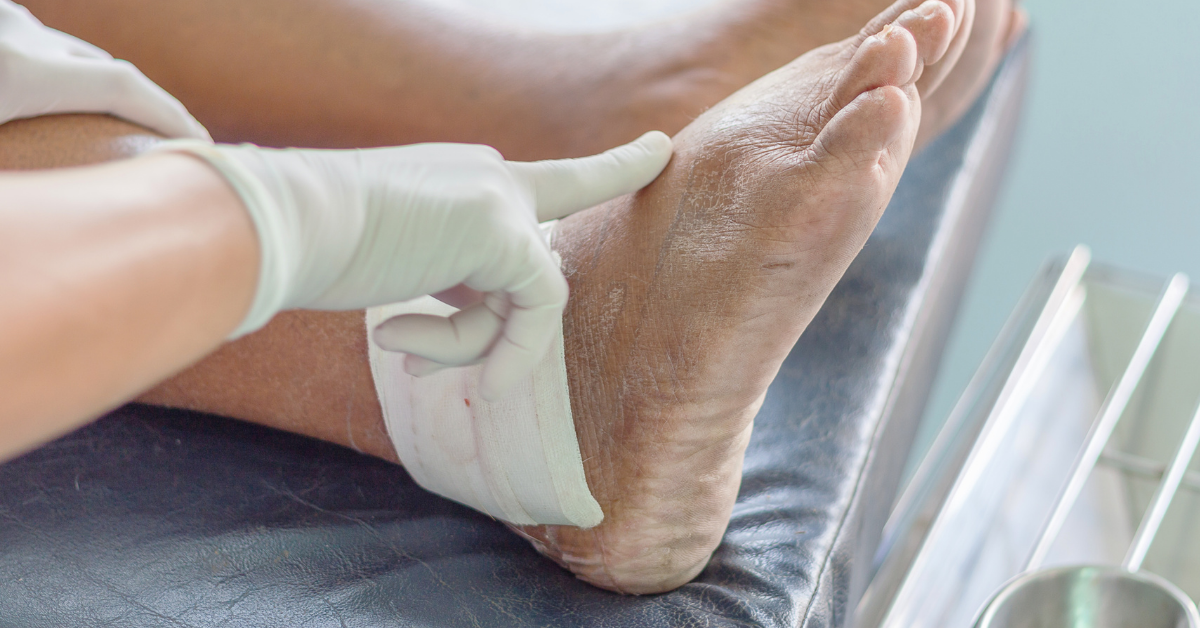Necrotic foot, a condition where the tissues in the foot die due to lack of blood flow or infection, is a serious health issue that can rapidly progress if left untreated. With expert orthopedic treatment, individuals suffering from necrotic foot can regain mobility, restore their health, and prevent further complications. At Tec Orthopedics, we specialize in treating necrotic foot with personalized care, advanced technologies, and a commitment to improving our patients’ quality of life.
What is Necrotic Foot?
Necrotic foot occurs when the tissues in the foot begin to die due to poor blood circulation or infection. This condition is most often associated with diseases like diabetes, peripheral artery disease (PAD), or severe infections. When blood flow is compromised, tissues do not receive the oxygen and nutrients they need to stay healthy, causing them to break down and die.
The symptoms of necrotic foot include pain, discoloration (such as darkening or blackening of the skin), and swelling. In severe cases, the tissue may become gangrenous, and the foot may lose function completely. If left untreated, necrotic foot can result in the need for amputation, making early intervention critical.
The risks of untreated necrosis are severe. As the tissue continues to die, it can spread, affecting surrounding healthy tissue and potentially leading to systemic infections. In the worst cases, untreated necrosis can result in the loss of the foot or leg. Seeking timely orthopedic treatment is crucial to prevent these complications and preserve foot function.
The Importance of Orthopedic Treatment for Necrotic Foot
Orthopedic treatment plays a key role in managing necrotic foot by controlling infection, preserving healthy tissue, and promoting the healing of damaged areas. Orthopedic specialists are trained to intervene in cases of necrosis, using both surgical and non-surgical approaches to restore foot health and prevent further damage.
In addition to treating the condition itself, orthopedic care for necrotic foot focuses on reducing pain and improving mobility. Specialized treatments help to support the healing process, enhance the overall function of the foot, and, in many cases, prevent the need for amputation.
Orthopedic Treatment Options for Necrotic Foot
Orthopedic treatment for necrotic foot may involve a combination of surgical and non-surgical approaches, depending on the severity of the condition.
Surgical Options
- Debridement: This procedure involves the removal of dead or infected tissue from the foot to prevent the necrosis from spreading. In some cases, additional surgeries may be necessary to remove more extensive areas of damaged tissue.
- Amputation: In severe cases where the necrosis has spread too far, amputation may be required to prevent the infection from reaching other parts of the body. However, amputation is considered a last resort, and orthopedic specialists aim to avoid it by preserving as much healthy tissue as possible.
Non-Surgical Options
- Specialized Wound Care: Proper wound care is essential to prevent infection and promote healing. Orthopedic specialists often use advanced dressings and techniques to care for open wounds resulting from necrotic foot.
- Braces and Custom Orthotics: Orthotic devices like custom-made shoes, braces, and insoles are designed to redistribute pressure and provide stability to the foot. These devices help reduce discomfort and improve mobility while the foot heals.
- Physical Therapy: Physical therapy plays an important role in restoring mobility, flexibility, and strength to the affected foot. Orthopedic specialists may recommend exercises and techniques to help patients regain their independence and function.
Innovative Technologies
At Tec Orthopedics, we use the latest technologies to aid in the treatment of necrotic foot. Advanced imaging techniques, like MRI and ultrasound, help us assess the extent of tissue damage and monitor the healing process. Additionally, regenerative treatments like platelet-rich plasma (PRP) therapy may be used to accelerate healing and improve tissue regeneration.
Benefits of Orthopedic Treatment for Necrotic Foot
The main benefits of orthopedic treatment for necrotic foot include:
- Pain Relief: Orthopedic treatments help reduce the pain associated with necrotic foot by addressing the underlying cause and promoting healing.
- Restoring Mobility: With the right treatment plan, individuals can regain the ability to walk and perform daily activities that were previously hindered by the condition.
- Preventing Further Complications: Orthopedic care minimizes the risk of the condition worsening, preventing the need for more invasive treatments like amputation.
- Enhancing Overall Wellness: By improving foot function and reducing pain, orthopedic treatment restores independence and enhances the patient’s quality of life.
Why Choose Tec Orthopedics for Necrotic Foot Treatment?
At Tec Orthopedics, we understand the impact of necrotic foot on your life. Our orthopedic specialists are committed to providing expert care, personalized treatment plans, and the latest technologies to help you recover. We conduct thorough assessments to determine the best course of action for your condition, whether that involves surgical or non-surgical interventions.
Our clinic’s mission is to restore your mobility, reduce your pain, and help you return to a life of independence. With our advanced technologies and a patient-centered approach, we strive to make a real difference in your recovery.
How to Prevent Necrotic Foot and Maintain Foot Health
Preventing necrotic foot starts with maintaining healthy blood flow to the feet and managing underlying conditions such as diabetes. Here are some practical tips to keep your feet healthy:
- Regular Foot Inspections: Check your feet daily for signs of infection, sores, or poor circulation. This is especially important for individuals with diabetes or peripheral artery disease.
- Maintain Proper Foot Hygiene: Clean your feet regularly and keep them dry to avoid fungal infections or other complications.
- Stay Active: Regular physical activity helps promote healthy circulation in the feet, reducing the risk of necrosis.
- Manage Chronic Conditions: If you have diabetes, PAD, or other conditions that affect circulation, work with your healthcare provider to manage them effectively.
Takeaway
Orthopedic treatment for necrotic foot is essential to prevent complications, reduce pain, and restore mobility. Whether through surgical or non-surgical interventions, orthopedic care plays a critical role in helping individuals regain their health and independence.
If you’re struggling with necrotic foot, don’t wait until the condition worsens. Contact Tec Orthopedics today to schedule a consultation with one of our experienced orthopedic specialists. We’re here to provide the personalized care and advanced treatments you need to get back on your feet.






